|
Visible light never tells the whole story. The human eye is only sensitive to a small window in the electromagnetic spectrum. We can't perceive light that has a shorter wavelength than violet or a longer wavelength than red. 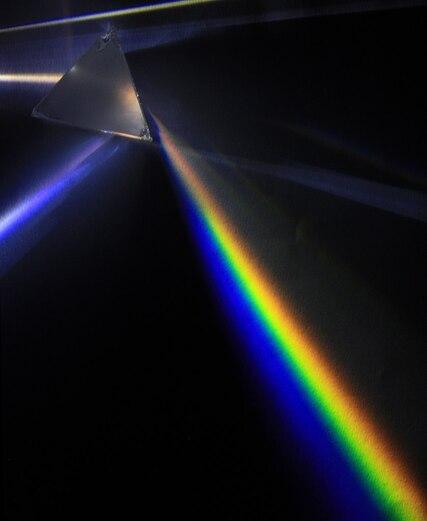 Credit: Wikimedia user D-Kuru Credit: Wikimedia user D-Kuru Infra-red light was discovered by an astronomer, William Herschel, better known for discovering the planet Uranus with his home-built telescope. He simply used a prism, a sunbeam and a thermometer. The prism splits the Sun's white light into its component colours as red light is refracted (or bent) less then blue light. When a thermometer is placed in the coloured beam its temperature rises, as the dispersed sunlight heats it. But Herschel was shocked to find that when he placed the thermometer just to the right of the red light the temperature went up even more. He concluded that the Sun was emitting a form of invisible light which we now call infra-red, literally "below red". This turned out to be a far more important discovery than finding a new planet. (It was also something of an accident, William moved the thermometer out of the beam to measure the ambient air temperature, but he deserves full credit for noticing and solving the puzzle.) Infra-red detection is somewhat misleadingly referred to as 'heat vision'. In fact, all objects emit light, it's just that objects at everyday temperatures radiate mostly infra-red. It's odd to think that we glow in infra-red light. Hotter objects shine in visible light, you can see this by turning on an electric hob. As it warms up it starts to glow a dull red, as peak emission moves up the electromagnetic spectrum from infra-red towards red. Our Sun, with a surface temperature of almost 6,000°C, shines most brightly in green light but we perceive it as white because blue and red light is also produced. Objects don't emit a single wavelength (or colour) of light but a range, the Sun also produces infra-red and ultra-violet light. There is a relationship between temperature and energy, higher frequency light-waves carry more energy so require higher temperatures to produce. Very hot objects emit x-rays, while cold ones produce microwaves or radio waves. This phenomenon is somewhat confusingly called 'black-body radiation', it matters to us because it's how the Sun warms our planet. It's also useful to blacksmiths, who use the colour of the heated metal to judge its temperature. Above are two images of NGC 1499, the California Nebula. The monochrome image on the left shows glowing hydrogen (actually a deep red colour, but the mono image shows more detail) and was taken at Caradon Observatory. The image on the right is a bi-colour composite of visible and infra-red light. Glowing hydrogen is shown as orange while 'warm' interstellar dust is blue. ('Warm', that is, compared to the near-void of space. The dust is at a temperature of somewhere between -170°C and -200°C.) Regions that emit both Hα and IR light are white.
The infra-red data reveals a much larger structure than can be seen in visible light. The blue patch on the left of the nebula appears be heated by stellar winds from the star Xi Persei, which is responsible for lighting up the nebula. The glowing hydrogen is a relatively thin skin on a large cloud of gas and dust. Concentrations of gas and dust block the UV light from XI Persei, providing shade. The IR data has been raided from one of NASA's space telescopes, the Wide-field infrared Survey Explorer (WISE). WISE images are freely available for download but must be credited.
0 Comments
It's surprising just how far some deep sky objects stretch across the sky. This composite shows a deeper exposure aligned over a wide-angle image of the Caradon Observatory site. The outer Milky Way runs from upper left to lower right, from Gemini to Cassiopeia. Visible above the trees is the red smear of NGC 1499, the California Nebula, to scale with the foreground image. It covers some 3 degrees of the sky, six full Moons across. While invisible to the naked eye it's not that far out of sight, making a challenging binocular target. However, in long-exposure photographs it's one of the brightest nebulae in the sky. A closer view shows its structure, glowing red from ionised hydrogen with hints of blue from glowing oxygen giving it a pink hue. Dark features are concentrations of dust, often sites of star formation. It's a vista sculpted by natural processes - stellar winds and radiation pressure from bright stars, and gravity.
Xi Persei is a runaway star, ejected from its birthplace either by a close encounter with another star or the supernova of a companion. A chance encounter has brought it close to a molecular cloud, making the California Nebula visible. The plane of the Milky Way is littered with these concentrations of gas and dust, largely invisible in the visible spectrum but detectable by radio and infra-red telescopes. The nebula is just an optically bright feature of a much larger complex. If Xi Persei had been launched in another direction it might well have painted, and to a degree sculpted, an entirely different deep sky object. The monochrome image above was taken using a short telephoto lens on the 26th March and blended into a colour image taken previously. Imaging it with a telescope usually requires shooting separate panes to stitch together in a mosaic, as it will not fit within the field of view. This spectacular 103 hour effort by Sara Wager shows the nebula in intricate detail and is best viewed on a large high-resolution monitor.
|
Archives
May 2020
Categories
All
|
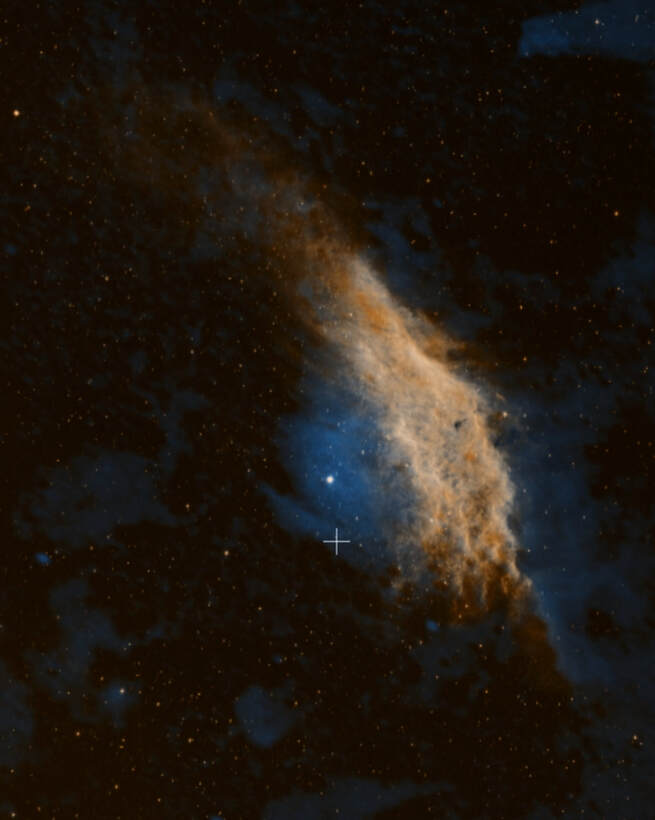
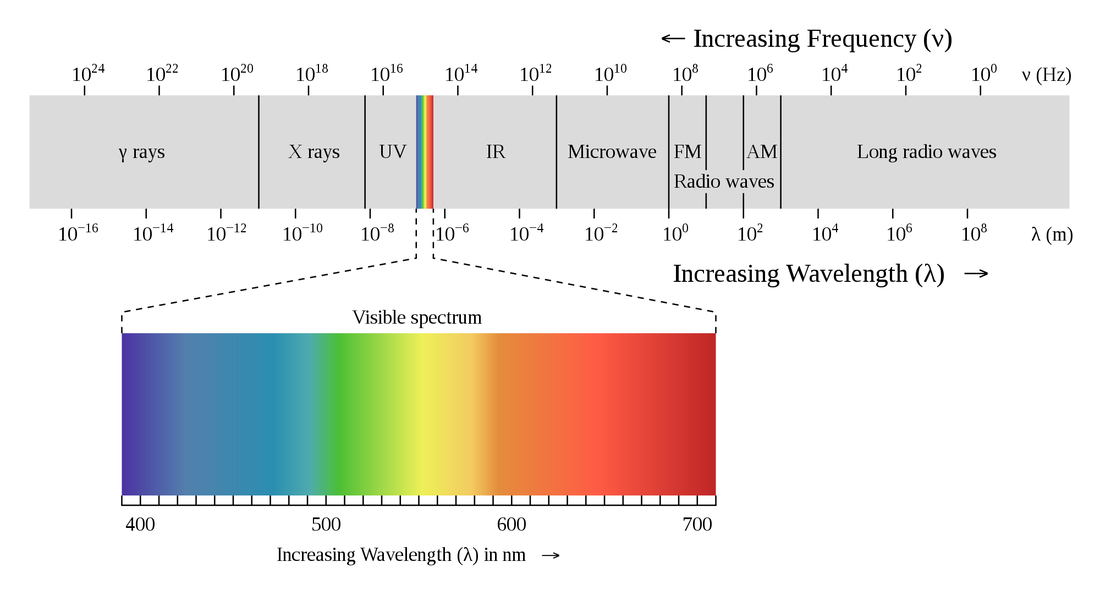
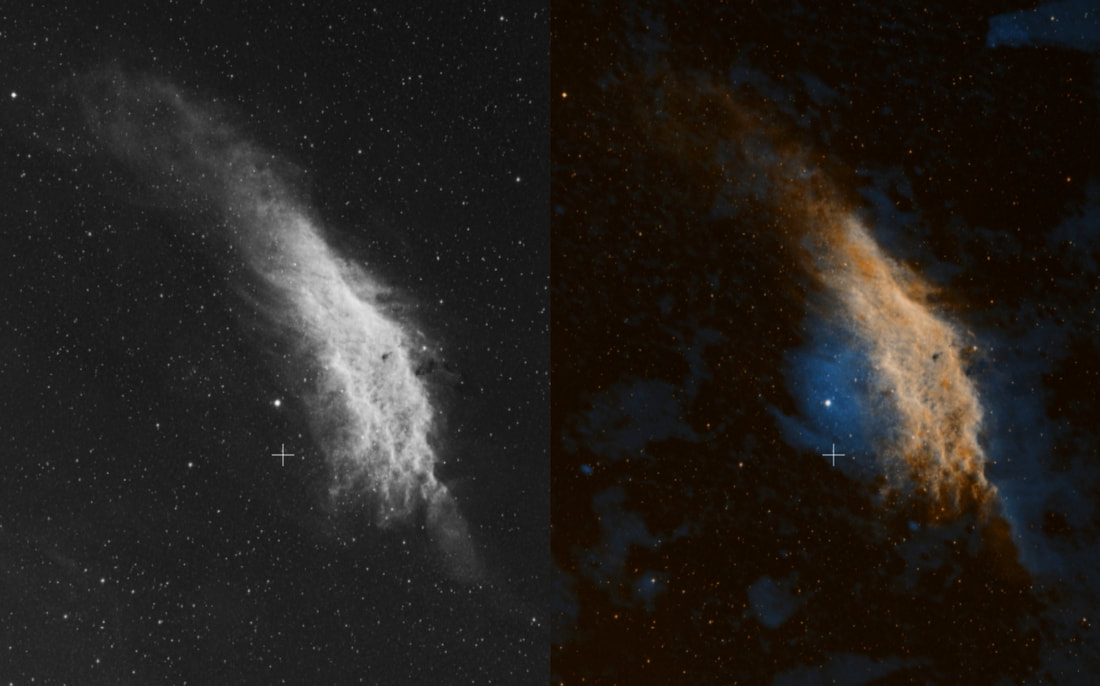

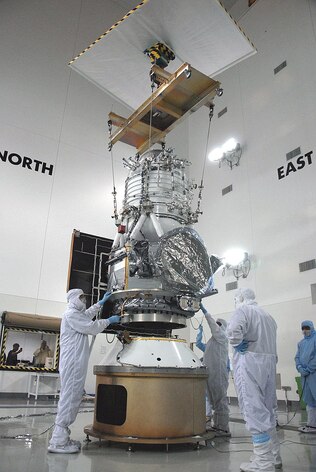
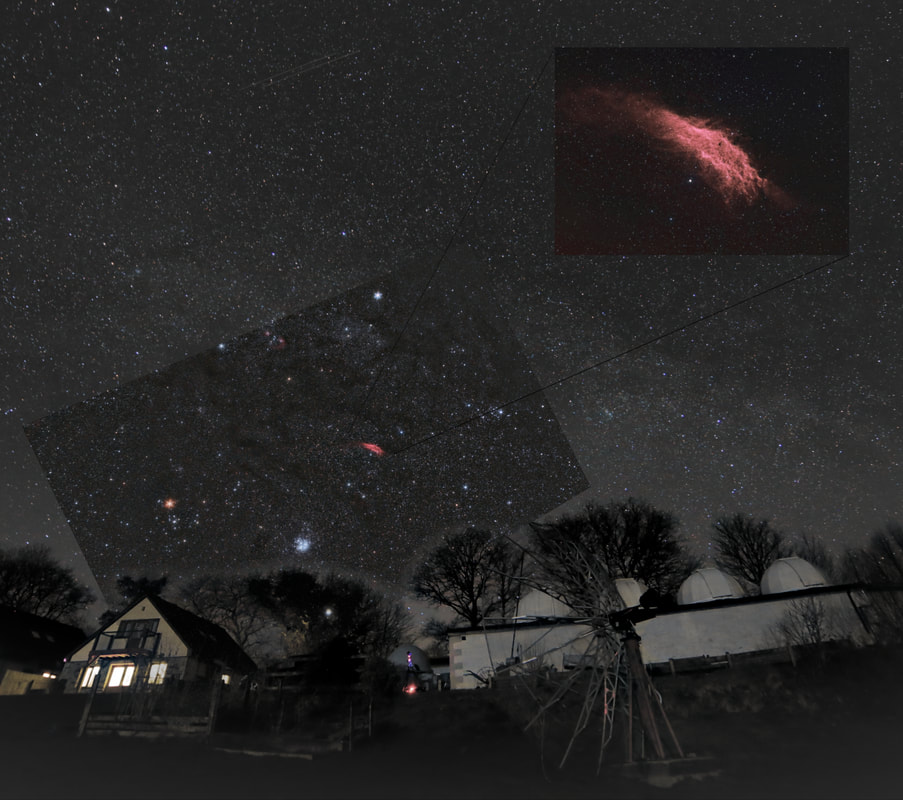
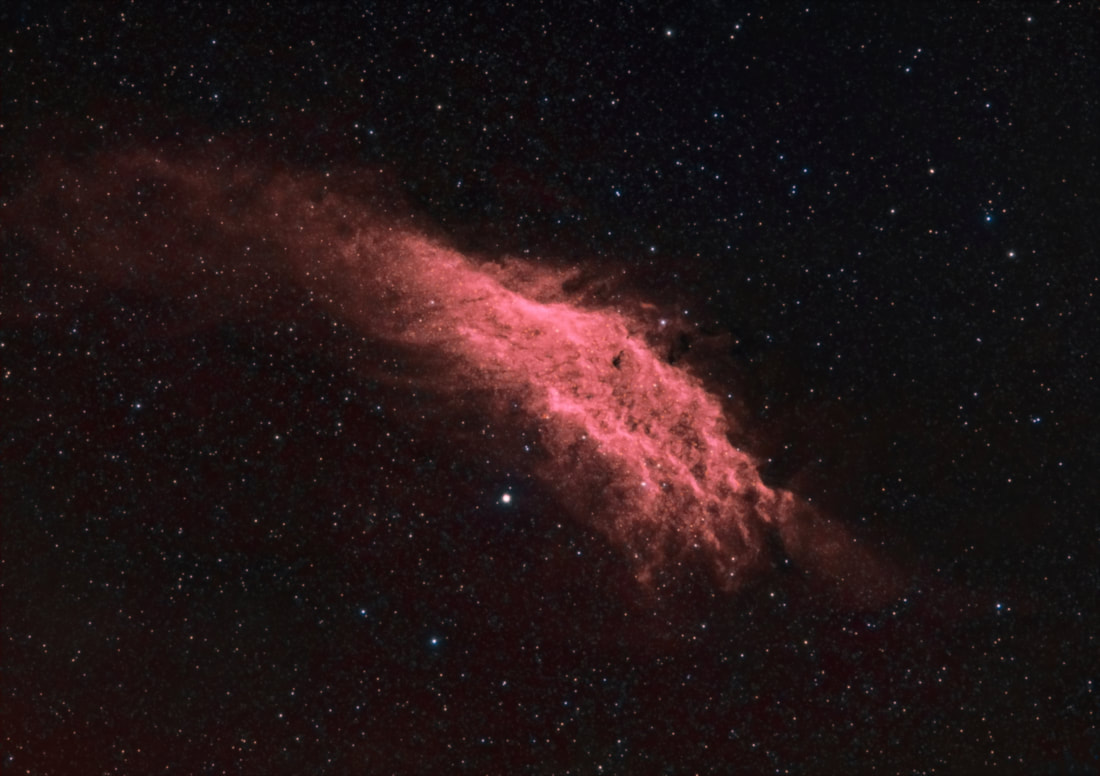
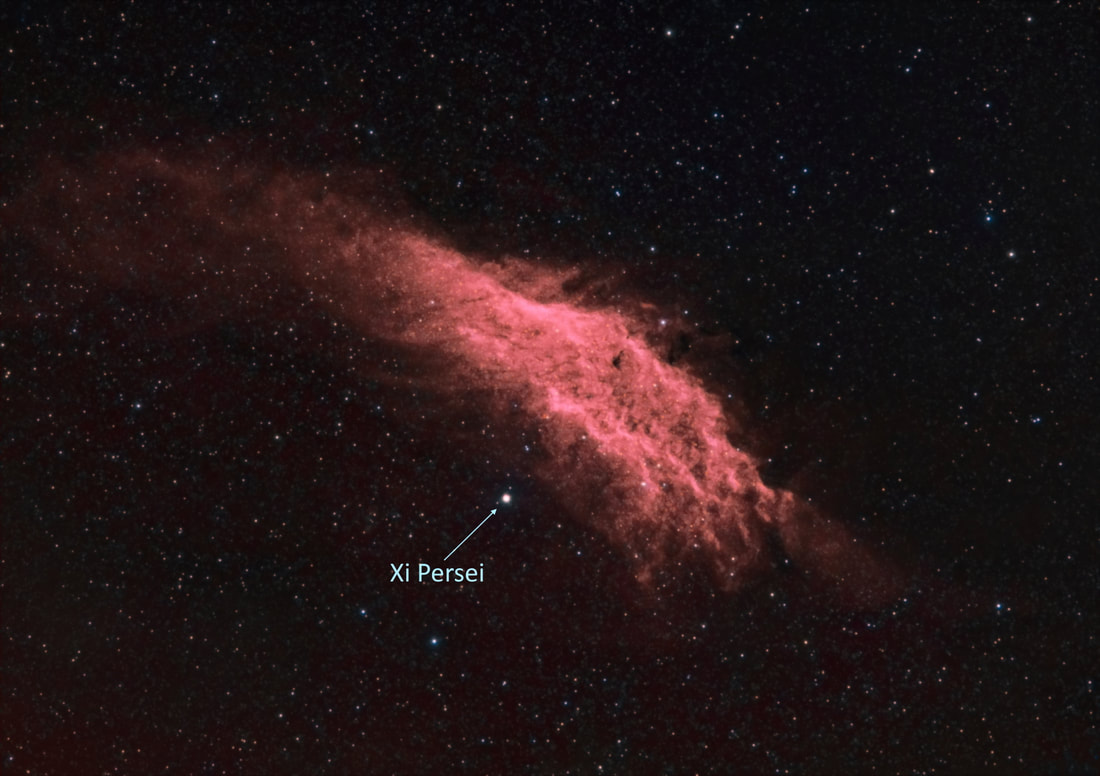
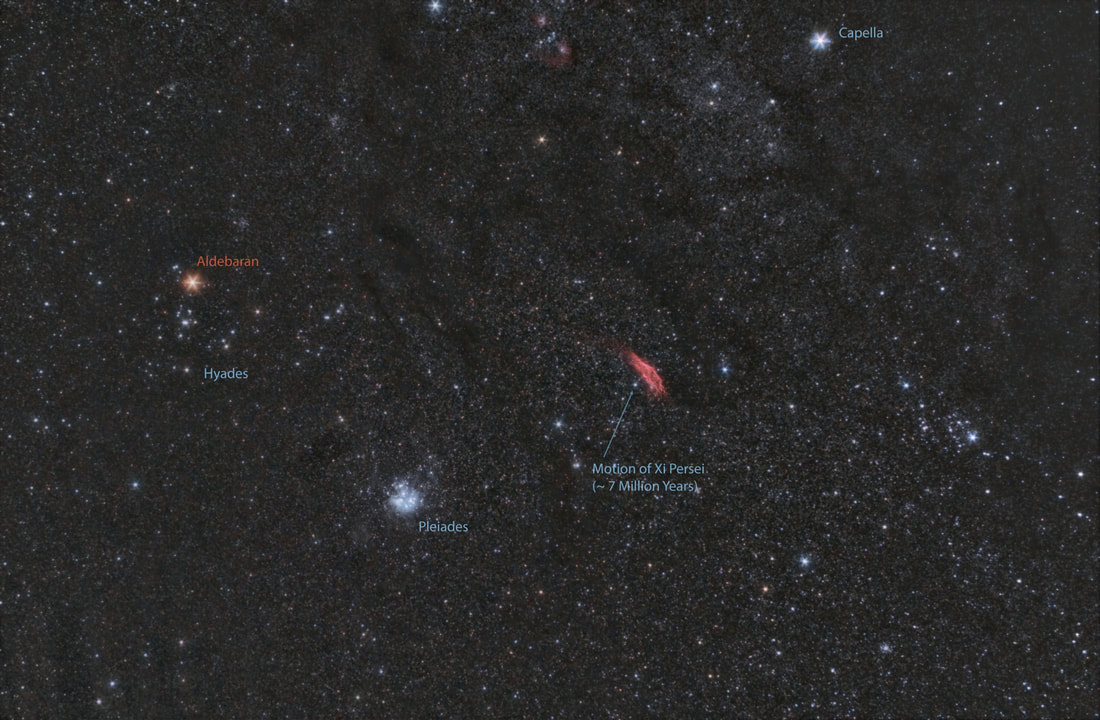
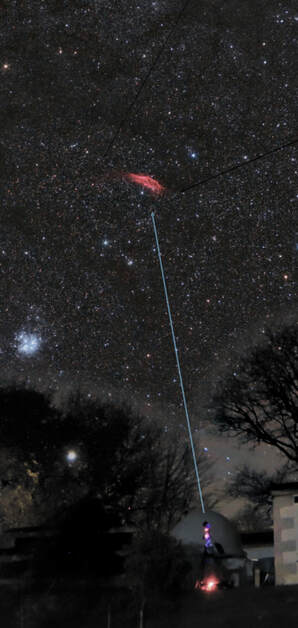
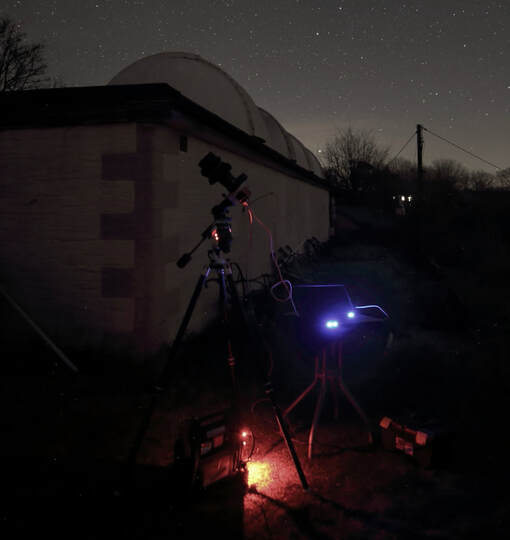
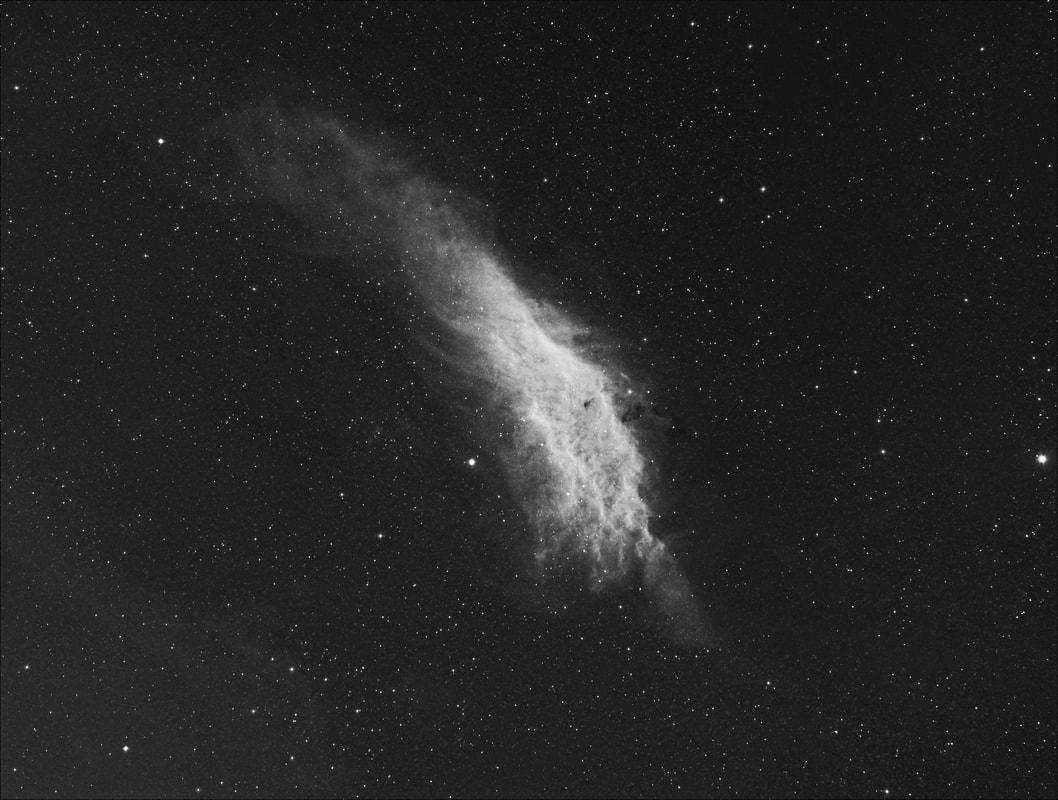
 RSS Feed
RSS Feed